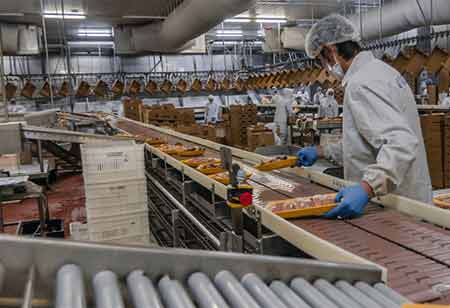Thank you for Subscribing to Food Business Review Weekly Brief
What Role Can Robotics Play In Bakery Production?
Modern bakers must combine traditional craft skills with cutting-edge automation technologies to thrive in high-competitive markets. Most individual processes

By
Food Business Review | Thursday, August 04, 2022
Stay ahead of the industry with exclusive feature stories on the top companies, expert insights and the latest news delivered straight to your inbox. Subscribe today.

Like most manufacturing industries, Baking is preparing to adopt 'Industry 4.0'. Various pieces of machinery freely and rapidly exchange information, allowing the overall production system to adapt instantly to outside influences changing needs.
FREMONT, CA: Modern bakers must combine traditional craft skills with cutting-edge automation technologies to thrive in high-competitive markets. Most individual processes – mixing, kneading, flouring and seeding, scoring – and product and material handling requirements push themselves to automation, while industrial robots can perform other duties.
Bakeries That Use Robotics
Robot installation in bakeries, whether small craft operations or larger industrial ones, may require increased system flexibility and availability. Traditional automation solutions, for example, maybe insufficiently flexible to allow timely product changeovers if a variety of products are baked, manufactured, packed, or manipulated on a single line.
Compared to more traditional manual or semi-automated production methods, production cycles can be designed to be significantly faster and more cost-efficient; quality and consistency can be assured, and hygiene is never compromised. Robots, In addition, are frequently controlled by a camera system or 'computer vision,' which appears naturalistic and simple to operatives who must work with robots.
What Role Does Roberts Play in Bakeries?
Pick-and-place applications, such as placing delicately iced buns into the pockets of plastic trays before wrapping in final consumer packaging, can benefit from robots. For example, using robotic technology, one biscuit production line in the United States increased daily production from 12 to 20 tons of biscuits. At the same time, gentle handling by the robots reduced waste and increased quality by 20 percent.
Continuous improvement of production processes, increased efficiency, cost savings, secure profit margins, and overall competitiveness are required for a bakery to survive in competitive markets over the long term. Robots, automation, data transparency, and real-time adaptive intelligence can all help bakers stay in business in the long run.






